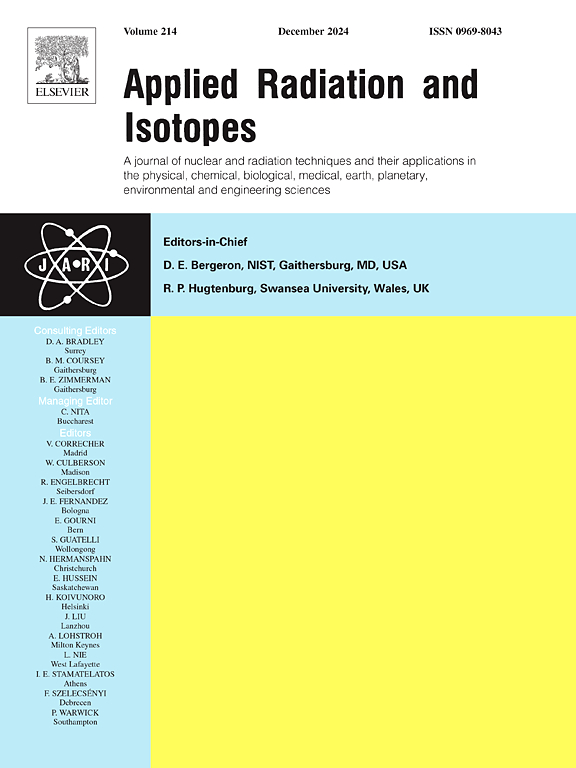基于改进型 3D CNN 的三维辐射场重建算法研究
IF 1.6
3区 工程技术
Q3 CHEMISTRY, INORGANIC & NUCLEAR
引用次数: 0
摘要
本文研究了改进型三维卷积神经网络(3D CNN)在基于稀疏数据的辐射场重建中的应用。稀疏辐射数据点被整合到结构化的三维矩阵中,并输入到自注意集成 CNN 中,使该网络能够插值并生成完整的辐射分布网格。通过在有屏蔽和无屏蔽以及细化网格配置的情况下进行随机辐射源实验,对模型的有效性进行了评估。结果表明,在无屏蔽环境中,仅 5%(15 个点)的取样就能产生 4% 的平均相对误差,而在屏蔽环境中,7%(21 个点)的取样能将误差保持在 11% 左右。在精细网格环境下,2% 的采样率足以将误差限制在 6.58%。因此,改进后的三维 CNN 被证明对稀疏数据情况下的精确三维辐射场重建非常有效。本文章由计算机程序翻译,如有差异,请以英文原文为准。
Research on a three-dimensional radiation field reconstruction algorithm based on an improved 3D CNN
This article investigates the application of an improved three-dimensional convolutional neural network (3D CNN) for sparse data-based reconstruction of radiation fields. Sparse radiation data points are consolidated into structured three-dimensional matrices and fed into a self-attention integrated CNN, enabling the network to interpolate and produce complete radiation distribution grids. The model’s validity is assessed through experiments with randomly sourced radiation in scenarios both with and without shielding, as well as in refined grid configurations. Results indicate that in unshielded environments, a mere 5%(15 points) sampling yields an average relative error of 4%, while in shielded settings, a 7% (21 points) sampling maintains the error around 11%. In refined grid contexts, a 2% sampling rate suffices to limit the error to 6.58%. Thus, the improved 3D CNN is demonstrated to be highly effective for precise three-dimensional radiation field reconstruction in sparse data scenarios.
求助全文
通过发布文献求助,成功后即可免费获取论文全文。
去求助
来源期刊

Applied Radiation and Isotopes
工程技术-核科学技术
CiteScore
3.00
自引率
12.50%
发文量
406
审稿时长
13.5 months
期刊介绍:
Applied Radiation and Isotopes provides a high quality medium for the publication of substantial, original and scientific and technological papers on the development and peaceful application of nuclear, radiation and radionuclide techniques in chemistry, physics, biochemistry, biology, medicine, security, engineering and in the earth, planetary and environmental sciences, all including dosimetry. Nuclear techniques are defined in the broadest sense and both experimental and theoretical papers are welcome. They include the development and use of α- and β-particles, X-rays and γ-rays, neutrons and other nuclear particles and radiations from all sources, including radionuclides, synchrotron sources, cyclotrons and reactors and from the natural environment.
The journal aims to publish papers with significance to an international audience, containing substantial novelty and scientific impact. The Editors reserve the rights to reject, with or without external review, papers that do not meet these criteria.
Papers dealing with radiation processing, i.e., where radiation is used to bring about a biological, chemical or physical change in a material, should be directed to our sister journal Radiation Physics and Chemistry.
 求助内容:
求助内容: 应助结果提醒方式:
应助结果提醒方式:


